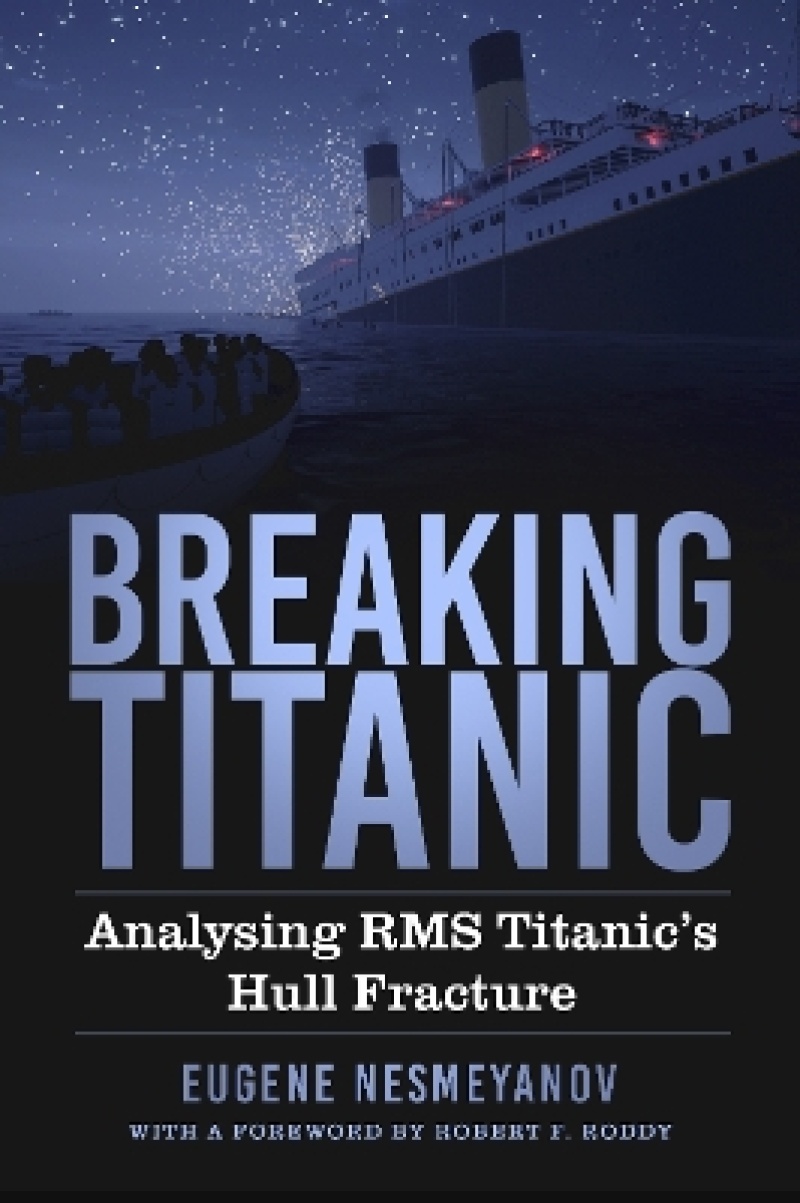<p>‘Very few people are as informed about <em>Titanic</em> as Eugene Nesmeyanov. In this book, he offers his detailed assessment of just how <em>Titanic</em> transitioned from a floating ship to a shipwreck scattered on the ocean floor. I found it compelling and fascinating and recommend it as one who has with submersibles and robots explored that scattered wreckage.’</p>
- James P. Delgado,
<p>‘Eugene Nesmayenov has performed a unique, valuable service by collating and comparing the ever-growing body of facts, hypotheses, findings, inconsistencies and fallacies from more than a century of survivor accounts, official inquiries and multiple expeditions to the wreck. <em>Breaking Titanic</em> is a thoughtful analysis by this expert author, and a detailed portrait of where our knowledge stands in understanding <em>Titanic</em>’s history, present status and likely future.’</p>
- Charles A. Haas,
At 11.40 p.m. on 14 April 1912, RMS Titanic struck an iceberg. She sank less than three hours later, taking around 1,500 people down with her. Devastated survivors provided conflicting information about her final hours – did she slip gracefully below the waves in one piece, or did she violently break apart?
The answer would not be confirmed for seventy-three years.
Breaking Titanic is the first comprehensive study of the break-up of Titanic’s hull. Using eyewitness accounts, underwater archaeology reports and data from computer simulations, Eugene Nesmeyanov presents a critical analysis of the most significant theories and models of the break-up, drawing his own conclusions based on the available body of evidence.
The first comprehensive study into the problem of the break-up of Titanic's hull
- Title
- Copyright
- Contents
- Foreword by Robert F. Roddy
- Introduction
- Acknowledgements
- Prologue – The Loss of SS Pacific (1875)
- 1 The Break-Up of Titanic in the Evidence of the American Inquiry
- 2 The Break-Up of Titanic in the Evidence of the British Inquiry
- 3 A Look at the Break-Up of Titanic After the Completion of Official Inquiries and up to the Early 1980s
- 4 Titanic Expeditions with the Participation of Robert Ballard and his View of the Break-Up in 1985–
- 5 The Break-Up as Described in Titanic: An Illustrated History by Lynch and Marschall (1992)
- 6 The Break-Up of Titanic According to W. Garzke et al. (1996), ‘The Titanic and Lusitania: A Final Forensic Analysis’
- 7 ‘The Sinking of S.S. Titanic: Investigated by Modern Techniques’ by Hackett and Bedford (1996)
- 8 The Break-Up of Titanic According to W. Garzke et al. (1997), ‘Titanic, The Anatomy of a Disaster’
- 9 Roy Mengot’s Bottom-Up Break Theory
- 10 The Break-Up in James Cameron’s Titanic (1997)
- 11 The Break-Up of Titanic According to Mengot and Woytowich (2009)
- 12 The 2010 Expedition to Titanic: A New Look at the Break-Up and the Debris Field
- 13 ‘Titanic: The Final Word with James Cameron.’ The Break-Up According to Stettler and Thomas (2012)
- 14 The Break-Up of Titanic According to W. Lange, Drain the Titanic (2015)
- 15 The Break-Up of Titanic According to R. Roddy and SNAME (2021)
- 16 ‘She’s broken.’ Evidence of the Break-Up of Titanic from the Press, Literature and Personal Sources
- 17 New Paradigm of the Break-Up of Titanic (2022)
- Conclusion
- Instead of an Epilogue
- Appendix I: The Full Narrative of Thomas Patrick Dillon
- Appendix II: A Summary of the Titanic Expeditions (Primarily Scientific) from 1985 to 2023
- Notes
- List of Main Sources
The first comprehensive study into the problem of the break-up of Titanic's hull, based on all currently available data
